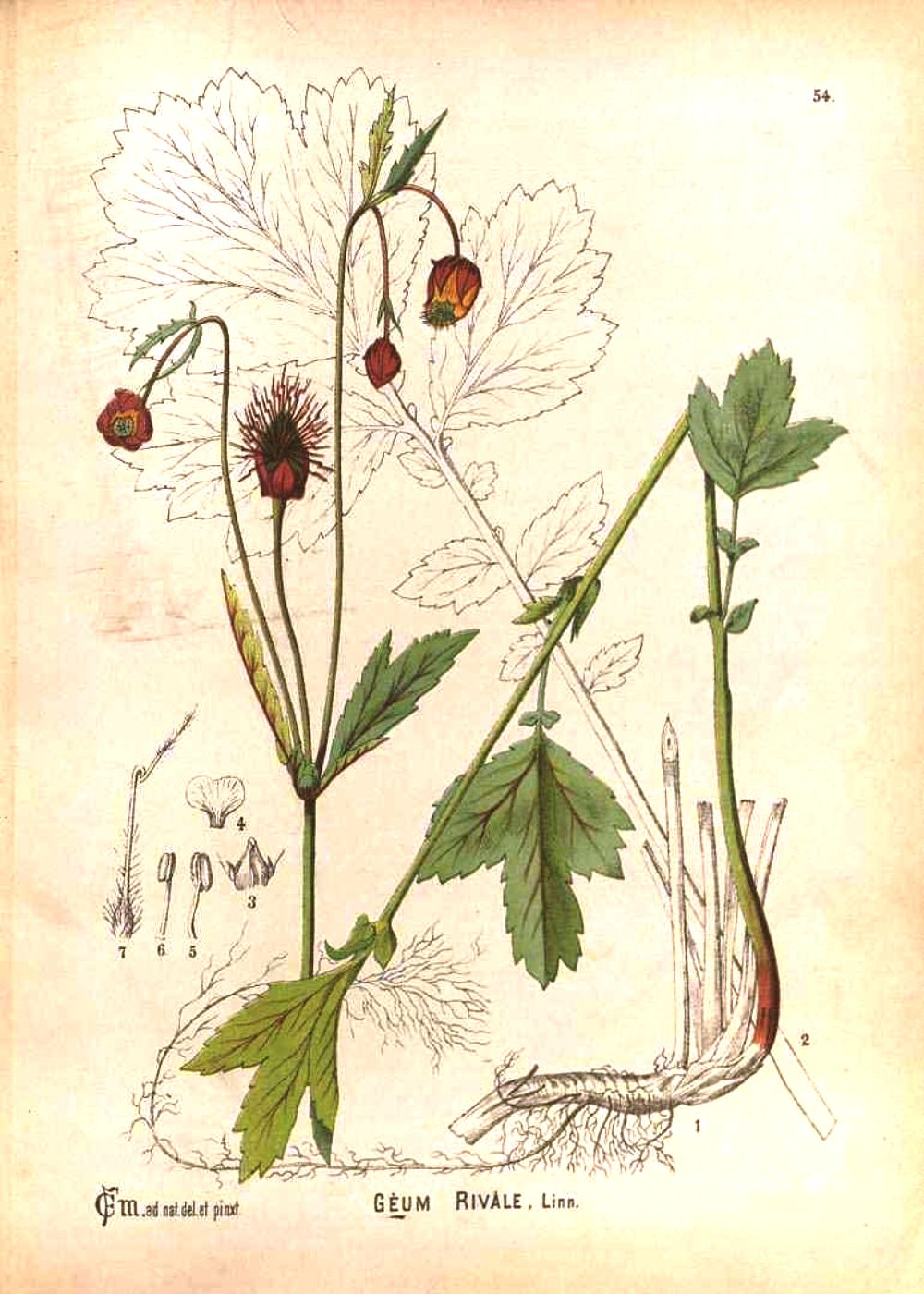Geum rivale
Geum rivale
The Water avens (Geum rivale L.) is a perennial herbaceous species belonging to the Rosaceae family.
Systematics –
From a systematic point of view it belongs to:
Eukaryota domain,
Kingdom Plantae,
Subkingdom Tracheobionta,
Spermatophyta superdivision,
Magnoliophyta division,
Class Magnoliopsida,
Subclass Rosidae,
Rosales Order,
Rosaceae family,
Subfamily Rosoideae
Genus Geum,
Species G. urbanum.
Etymology –
The term Geum derives from the Greek γεῦμα gheúma taste, taste, good taste.
The specific rival epithet comes from rívus rivo, stream: of the streams, reference to the growth environment.
Geographic Distribution and Habitat –
The Water avens is a species with a vast circumboreal distribution. This plant is native to much of Europe, as well as parts of Central Asia and North America.
In Italy it is present in all regions of central-northern Italy (doubtful presence in Umbria and Molise); in the South it is present only in Basilicata and Calabria and is no longer found in Campania.
Its habitat is that of rather humid places, in meadows and on the edge of woods, in gorges, bushes, along the banks of watercourses, with optimum in the montane belt.
Description –
Geum rivale is a plant that reaches a height ranging from 25 to 50 cm, with a thin stem covered with small hairs that emerges from a basal rosette of pinnate leaves distributed alternately along the stem.
The flowers are pendulous, supported by a chalice similar to a bluebell that envelops the 5 mottled yellow-violet petals, simple but of great effect with the head bowed as if they were meditating.
Produces flowers from May to September.
The fruit is an achene (polyachene) formed by numerous achenes (usually more than 100), 3.1-4.2 x 1-1.2 mm, yellow, hairy, surmounted by a feathery style about 20 mm long, formed by 2 articles the superior of which is deciduous.
Cultivation –
Geum rivale is a perennial herbaceous plant suitable for cultivation on the banks of natural lakes, in a humid area of a country garden, on the banks of a stream to which it gives a spectacular note of colour.
It is a very rustic plant that tolerates even very low temperatures, needs a few hours of sun and always moist soil.
If you also want to use it for food, it is better not to administer chemical fertilizers or fungicides close to the moment of harvesting the rhizome.
Customs and Traditions –
Geum rivale is a plant with pharmaceutical characteristics appreciated and known since ancient times which include digestive, astringent and emmenagogue properties (that is, to favor menstrual flow).
The rhizome of this plant is dried and used as an anti-haemorrhagic and anti-diarrheal agent; in North America the underground parts are used for infusions with a chocolate flavor and the plant is called “Indian chocolate”.
Geum rivale is pollinated mainly by bees, less often by flies and beetles.
Geum rivale hybridizes quite regularly with Geum urbanum as they are closely related genetically.
Method of Preparation –
Water avens is a plant that finds interesting uses in the ornamental field but can also be used for food and medicinal purposes.
The rhizome is used which is dried and subsequently used to prepare infusions that have a chocolate taste.
Guido Bissanti
Sources
– Acta Plantarum – Flora of the Italian Regions.
– Wikipedia, the free encyclopedia.
– Useful Tropical Plants Database.
– Conti F., Abbate G., Alessandrini A., Blasi C. (ed.), 2005. An annotated checklist of the Italian vascular flora, Palombi Editore.
– Pignatti S., 1982. Flora of Italy, Edagricole, Bologna.
– Treben M., 2000. Health from the Lord’s Pharmacy, Advice and experiences with medicinal herbs, Ennsthaler Editore.
Attention: The pharmaceutical applications and alimurgical uses are indicated for informational purposes only, they do not in any way represent a medical prescription; we therefore decline all responsibility for their use for curative, aesthetic or food purposes.


